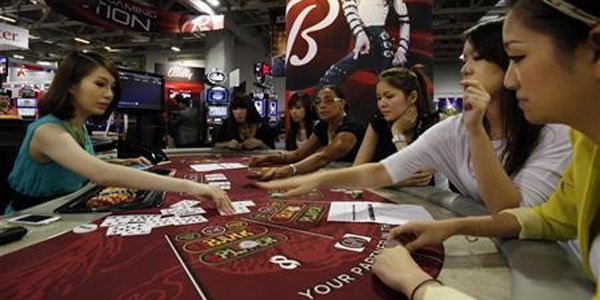The Rise of the Little People: How Low-Rollers Will Define the Asian Casino Market
Posted: April 23, 2014
Updated: October 4, 2017

Most associate Asia’s burgeoning casino market with wealthy high-rollers, but the data shows that future growth will come from mass market gamblers and vacationers.
Asia’s burgeoning casino infrastructure is treated in the gambling news as a “haven for high-rollers.” Junkets transport fabulously wealthy businessmen from across the continent into luxurious casinos in Macau and Singapore. These same wealthy men, many of which are linked to organized crime syndicates, behave outrageously, flaunting unlimited stacks of cash and abusing croupiers. It seems that in Asia, money can buy anything.
While establishments like the Sands Macau and Resorts World Sentosa certainly bend over backwards for the rich and famous, the data shows that mass market gamblers, “low-rollers,” are bringing in a lot more cash than is usually reported in the media. If Asia is to reach its potential as the global leader in casino gambling, it will be on the backs of these ordinary folk.
Gamblers of the world unite!
The numbers don’t lie. The city led the world in casino revenue with $45 billion in 2013, much of which came from low-rollers from mainland China where Chinese gambling laws prohibit casinos.
• While Asian gambling hubs like Macau and Singapore are known for serving high-rollers, mass market gamblers are making up an increasingly large share of casino profits
• The Economist reported that in 2013 “low-rollers” accounted for more than half of Macau’s casino profits
• Macau has opened up to mass market gamblers, while Singapore stubbornly keeps them out; however, Singapore’s revenues are stagnating
Morgan Stanley recently estimated that in 2014 revenue from mass market gamblers will grow by 28 percent, compared to 13 percent for high rollers. Galaxy Entertainment, the city’s third-largest casino operator after Sands and Wynn, reported that high rollers accounted for more than half of the company’s revenue in 2013.
The Economist reported that while high-rollers accounted for over 60 percent of Macau’s revenues in 2013, mass market gamblers brought in significantly higher profits. Why the gap between revenues and profits? VIPs spend a lot more money, but they are also very expensive to serve. The helicopter rides, comped hotel rooms and lavish feasts add up. By contrast, ordinary players provide their own transport and pay for their own room and board. While they spend less on an individual basis, the profit margin on their wager tends to be higher than that of high rollers. In short, it plays to market to the masses.
Expect the masses to keep massing
This trend will only keep growing. As China, South Korea, India and the Philippines continue to grow economically, more middle-class families and individuals will look for holiday destinations abroad. Casino hubs such as Macau are rich not only in gambling opportunities but in resort facilities as well. Just as how Las Vegas eventually made the transition from gambling-only city to an entertainment hub with something for everyone, Macau seems to be going down a similar path.
The current lack of infrastructure in the South China Sea maintains the high-roller heavy model, as casinos provide big spenders with helicopter rides from Hong Kong or junket-operated jets from China and Japan. But an upcoming bridge from Hong Kong to Macau will make it easier for common gamblers to reach the enclave. Macau is also only a ferry ride away from the Chinese mainland, making it fairly accessible. Recently built high-speed rail lines in southern China will make it even easier for residents to get to Macau.
Reflecting increases in traffic, casino firms are making their establishments more friendly to non-gamblers. Wynn, Sands and Galaxy all have plans to increase investment in the non-gambling facilities of their integrated resorts, including more affordable hotel rooms and family-friendly things like swimming pools, shopping malls and children’s entertainment activities.
Singapore may yet open market
While Macau has opened up to low-rollers, Singapore and its 5.9 billion casino industry have stubbornly resisted their entry. The government charges a 12 percent tax on revenue from high-rollers, compared to 22 percent for mass market players. In addition, high casino entry fees keep locals and mid-income visitors away. While effective in maintaining an aristocratic aura at the blackjack table or Chinese poker room, this model may not be very profitable in the long term. The biggest problem? Foreign big wigs often skip town without paying their gambling debts. Reuters reported that Chinese nationals account for roughly half of table game revenue in Singapore’s two casinos. But getting them to pay up is not easy.
As China does not extradite or cooperate with Singaporean law enforcement, these debtors are “effectively untouchable.” Due to unpaid debts and strict junket rules which limit high-roller volume, Singapore’s casino revenue started to decline in 2012 and has remained revenue stagnant ever since. While there is yet no indication that the island state will follow Macau’s lead and open up its market to the masses, if it wants to remain relevant it may eventually have to.
















